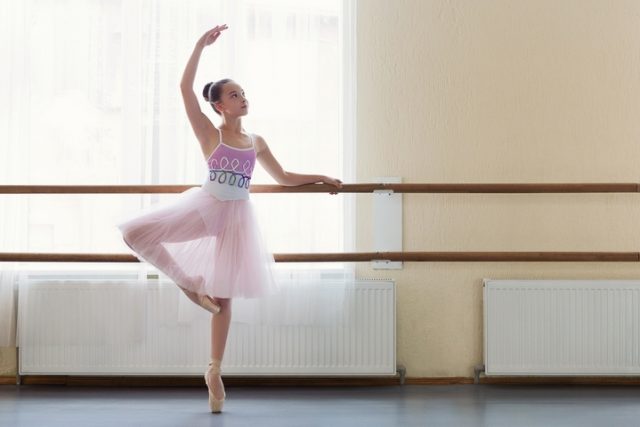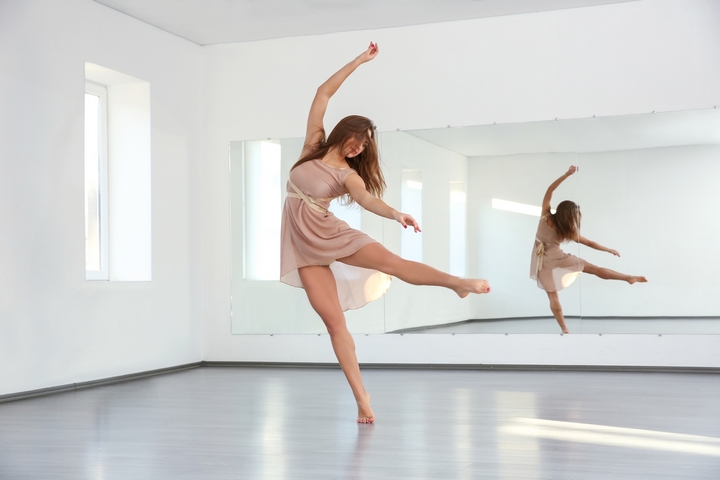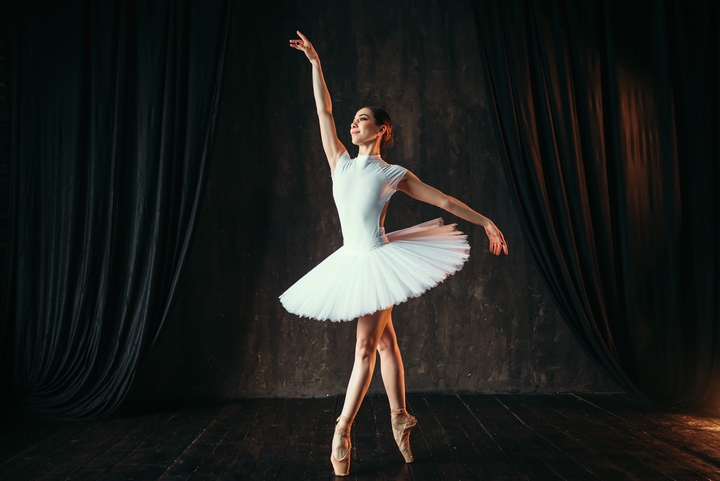
Ballet is a highly technical dance. A professional ballet dancer starts by mastering the basic ballet positions. These ballet positions are essential for learning ballet since they are the foundation for all other ballet movements.
Practising these basic ballet positions will help you improve your ballet skills. However, always remember to keep an equal turn out with your feet. The key is to be sure you can comfortably and safely stand in these positions.
Every step begins and ends with one of the primary positions or a slight variation thereof. Here are the six easy ballet positions you should expect to learn in your beginner ballet classes:
1. First Position

The basic positions in classical ballet have to do with the placement of the feet. The first position is one of the main ballet positions. Many people consider this as the easiest ballet positions for beginners to learn.
In the first position, your feet should be in contact with the floor and turned out as far as is comfortable for you. If possible, bring your heels together with the toes on each foot pointing out toward the opposite side.
You may not need to have your heels touching each other if you’re a beginner. However, if you are a more seasoned dancer, the space between the heels is expected to be two inches at most.
Allow your feet, thighs and calves to pivot until you form a straight parallel line from your feet to your shoulders. Make sure you are wholly balanced, so you don’t fall over. Once you get this position right, you are ready to move on to the next.
2. Second Position

As in the first position, your legs should be straight and feet turned out in opposite directions. Rather than let your heels touch, slide one foot from the other, such that the space between your feet is equivalent to your hip-width distance, or one-and-a-half the length of your foot.
Make sure the space between your feet is not too wide or too narrow. Spread your weight evenly on each foot.
3. Third Position

For a smooth transition to the third position, slide your foot back as if touching the other heel and bring one foot further across the other. Check that the heel of your front foot touches the arch of your back foot.
This is the point where most beginners start to move on to more complex exercises, so take your time to get used to it. This ballet position could be difficult for beginners to learn at first. It’s a ballet position less common beyond the beginner level and is often mistaken for a slack first or fifth position. Exemptions can, however, be made, especially if you find it difficult pulling off the fourth and fifth positions.
4. Fourth Position

While in the first position, bring one foot in front, ensuring your toes on each foot are facing the opposite direction. Make sure your front foot is approximately 4-5 inches or 13 cm in front of your other foot. Keep the heel of the front foot aligned with the toes of the back foot.
Alternatively, you can start from the third position and slide your front foot directly in front of you. If you prefer this option, maintain the distance between your feet at around one foot’s length.
Note that unlike other basic positions, your feet do not touch each other. Consider looking up pictures of the fourth primary position on the internet or watch video tutorials, so you can understand the best way to position your feet.
5. Fifth Position

This is, by far, one of the most challenging ballet positions for beginners to pull off, especially if you are using it to do jumps and turns. Essentially, it is like a fourth position with close to no gap in between the feet.
The foot directions are as they are in the fourth position — legs are held as straight and as tall as possible, leaving a space of about 1-2 fingers width between the feet. It makes you appear as though you are standing front toe to back heel, and vice versa.
The goal of this position is to have your front foot so far across your back foot that you can’t actually see the one at the back. To successfully execute this position, one needs years of training; be prepared to put in the time.
6. Arm Positions

Now that you know the five basic feet positions for ballet, you also need to be aware of the primary arm positions. Depending on the mode of teaching, your trainer may decide to teach you feet positions first, then arm positions, or feet and arm positions at the same time. The important thing is to learn as much as you can.
If you’re entirely new to ballet, try the most basic arm position. This is an easy ballet position for beginners to learn. It involves keeping your arms an inch in front of you with your hands slightly tilted and the fingertips pointing towards each other at roughly 4 inches apart.
Next, raise your arms until they are about shoulder high in front of you and open them up. Form a smooth curve on the outside by keeping your hands and elbows softly rounded. For all the arm positions, make sure you are raising your arm and not the shoulders.













